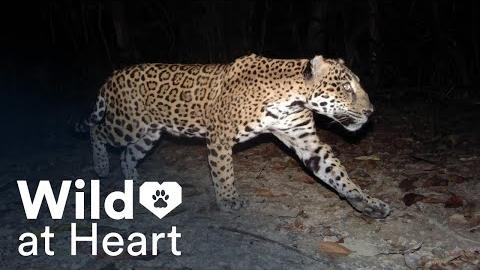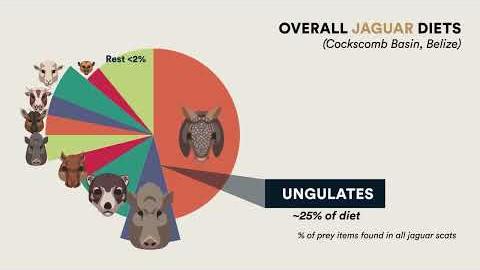About Jaguars
The largest cat in the Western Hemisphere, jaguars (Panthera onca) can be found from Mexico to Argentina. Despite this broad range, jaguars have been eradicated from nearly 50% of their historic range. Panthera co-created the bold Jaguar Corridor Initiative to connect core jaguar populations from Mexico to Argentina and we are leading or supporting efforts in almost a dozen jaguar range states. These efforts grew into a global partnership called the Jaguar 2030 Roadmap, which aims to secure 30 priority jaguar landscapes by 2030.
In 2022, the Parties to CITES (the global treaty on wildlife trade) adopted resolutions to eliminate jaguar poaching, mitigate threats to connectivity and recognize jaguars as the flagship species of the Americas. The 18 jaguar range states will soon agree upon a collaborative platform under CITES and CMS (the UN Convention on migratory species) to save this iconic big cat and its contributions to global biodiversity.
The Jaguar School
Since 2009, more than 1,300 children and youth have been taught the importance of wild cats and their conservation. Students learn that as apex carnivores, jaguars protect biodiversity and even the water we rely on — in flooded savannas, riverside forests, rivers and lagoons. Importantly, these future conservationists are catalyzing change for jaguars by bringing positive perceptions home to their families.
Where Do Jaguars Live?
Jaguars exist in 18 countries in Latin America from Mexico to Argentina in a variety of habitats, including swamps, tropical forests, scrublands and deserts. They also thrive in a variety of wet habitats, including flooded forests and the Brazilian Pantanal wetlands. Although lone, dispersing male jaguars have been identified in the United States, no females and no breeding population have existed there for nearly 100 years.
- Historic Jaguar Range
- Current Jaguar Range
Jaguar FAQs
What do jaguars eat and how do they hunt?
Jaguars use their powerful jaws to pierce the skulls of a diverse array of species, such as capybaras, peccaries and alligators.
How do you tell the difference between a leopard and a jaguar?
While leopards live in Africa and Asia, jaguars can be found across the Americas. Leopards are covered in more solid spots and rosettes, while jaguars sport blocky rosettes with distinct internal spots.
Can jaguars purr?
Most big cats, including jaguars, cannot purr. Instead, they’re known for their famous roars. This iconic vocalization is due to the hyoid bone in the cat’s throat being attached to a specialized stretching ligament.
What are the threats facing jaguars?
The species is threatened by habitat loss and fragmentation, conflict with local people due to the real or perceived threat posed to livestock and overhunting of the jaguar’s prey.
How can we save jaguars?
Together, we are securing and linking jaguar habitats and populations in the Jaguar Corridor, improving site security and wild management in critical protected areas, advocating to create protected areas where needed and collaborating with local communities to reduce conflict and increase human tolerance.




60c6.jpg?itok=dpqdldzS)